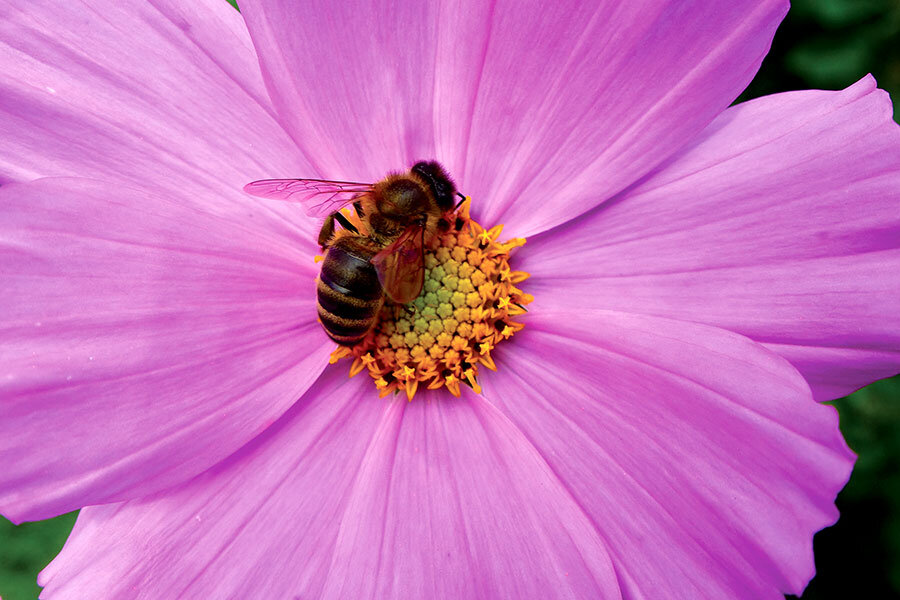The queen is sweet on honeybees
Loading...
Bees are having a tough time in England, too. While colony collapse disorder is far less of an issue in Europe than it is in North America, varroa mites, viruses, pesticides, and habitat loss have contributed to the loss of more than 50 percent of England’s bee population over the past two decades. Two native honeybee species are thought to be extinct.
The buzz about shrinking honeybee populations has mobilized concern. Help is coming from all manner of honey lovers, from Winnie-the-Pooh to Queen Elizabeth II.
The British Beekeepers Association has begun a campaign, Friends of the Honey Bee, encouraging children to help. Among Pooh’s “Top Ten Activities for Families to Help the Honey Bees” is planting a flowering tree and building bee habitats.
Buckingham Palace is the queen’s official London home. The Changing of the Guard ceremony in front of the palace has long been a major tourist attraction, but visitors seldom see the 39-acre walled oasis behind the 775-room royal residence. I was fortunate enough to be included in a walking tour this fall.
The queen’s garden is overseen by Queen Elizabeth herself; she makes all landscaping decisions. The garden features 6,500 plants, 420 trees, and 35 types of mulberry. The various garden “rooms,” including a formal rose garden, are connected by 2-1/2 miles of gravel paths. The original landscape design is credited to Capability Brown. Eighty varieties of birds have been spotted there, along with bats, foxes, hedgehogs, and 20 tawny owls.
In 2009, two hives of Italian honeybees were put in the garden at the queen’s request. Two more Italian hives (the placid species is popular with beekeepers everywhere) were added a year later. An expert from the London Beekeepers Association, along with a specially trained gardener, tends the 200,000 bees.
The hives are located on an artificial island in the middle of the garden’s 3-1/2-acre lake. The island is kept fairly wild. More than 350 varieties of wildflowers are allowed to go through a full cycle of growth before the grasses are cut in late August. The plants reseed themselves without other interference from the eight gardeners on staff.
Bees can also visit and harvest nectar from plants in the main garden, where something is always in bloom. (Bees travel up to six miles from their hive to gather nectar and pollen.) These busy bees produced 420 jars of honey last year. The queen is said to enjoy a bit of royal honey on her breakfast tray.
Keeping the island as wild as possible is one of the initiatives used at Buckingham Palace to keep the queen’s garden green, in both senses of the word. According to garden manager Mark Lane, 99 percent of plant waste is recycled on-site. Grass cuttings, twigs, branches, and soiled straw from the royal stables are shredded and composted.
Not far from the London palace, legendary food purveyor Fortnum & Mason has added four six-foot-tall beehives to the roof of its flagship Piccadilly store. Shoppers can watch Welsh Black bees on the bee-cam. There is a waiting list for the honey.
Beehives are also kept on a barge moored to Tower Bridge and on the roof of the National Portrait Gallery. It appears things are beginning to look a lot sweeter for honeybees in England.
To learn more about how to help bees, see “Give bees a chance” in the March 23 issue, or go to http://bit.ly/HelpTheBees.







